Baljuri- Winter 2020
It’s not K2 in winter, but it is not Lobuche or Ama Dablam either.
Between the 2nd and 3rd week of December 2020, Indian climber Anindya Mukherjee led a team of three other climbers Ashish Chanda, Aniket Mitra and Rivu Das on a bold attempt on Mt. Baljuri (5922m). This winter expedition was a self-contained, unsupported, carry-camp-climb, Him-Alpine style expedition without Sherpas, porters or fixed ropes.
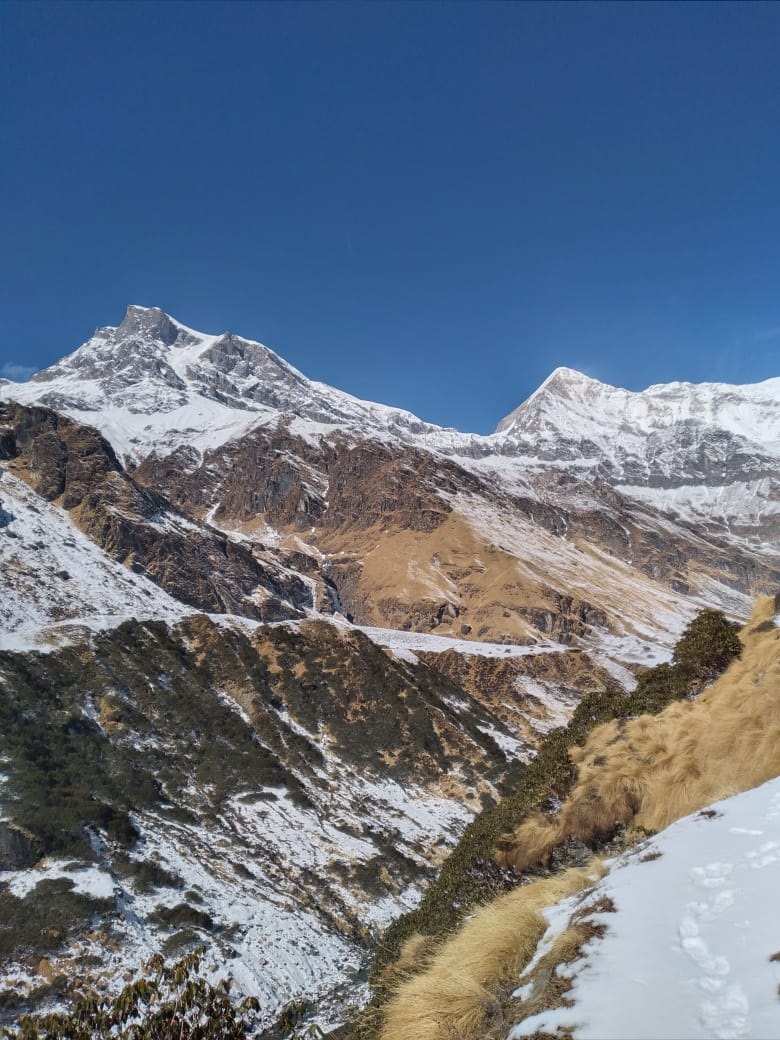
Baljuri (L) and Panwalidwar (R)
Having established Camp-1 at 4160m on 17th December, they struggled up through knee/waist deep snow the next day, but could only make it to a bivouac at around 4600m, hoping for firmer snow conditions early next morning. This proved futile, the snow conditions being ripe for a slab avalanche, they prudently retreated and returned to Base Camp safely without any cold injuries despite the conditions. However, their efforts have been applauded by the Indian Mountaineering Foundation and another veteran mountaineer.
Anindya clarified that, “I had always been inspired by my predecessors from West Bengal like Bidyut Sarkar, Gautam Datta, Amulya Roy and others who had practiced self-supported climbs, and having done the same earlier with foreign climbers, had always wanted to do the same with a small group of Indian climber friends,” as he would like to ‘practice what he preaches’ and ‘set a small example’. He was happy to say that, “this has been a tremendous learning experience, doing everything on their own steam, finding a safe route up, setting up a safe camp and finding a safe route to descend, without hired porters, Sherpas or fixed ropes, using pure Alpine style technique and not going up and down like a ping-pong ball”. He emphasised that he ‘believes to have set a small example’ that should “inspire more people to do it on their own and so learn and grow in the process”.
Self-reliance and uncertainty define an adventure. It is this self-reliance, based on an honest evaluation of one’s knowledge and experience based skill-sets, that determines one’s decisions under uncertain adversities and underwrites a worthwhile adventure, even if the desired outcome remains unachieved.
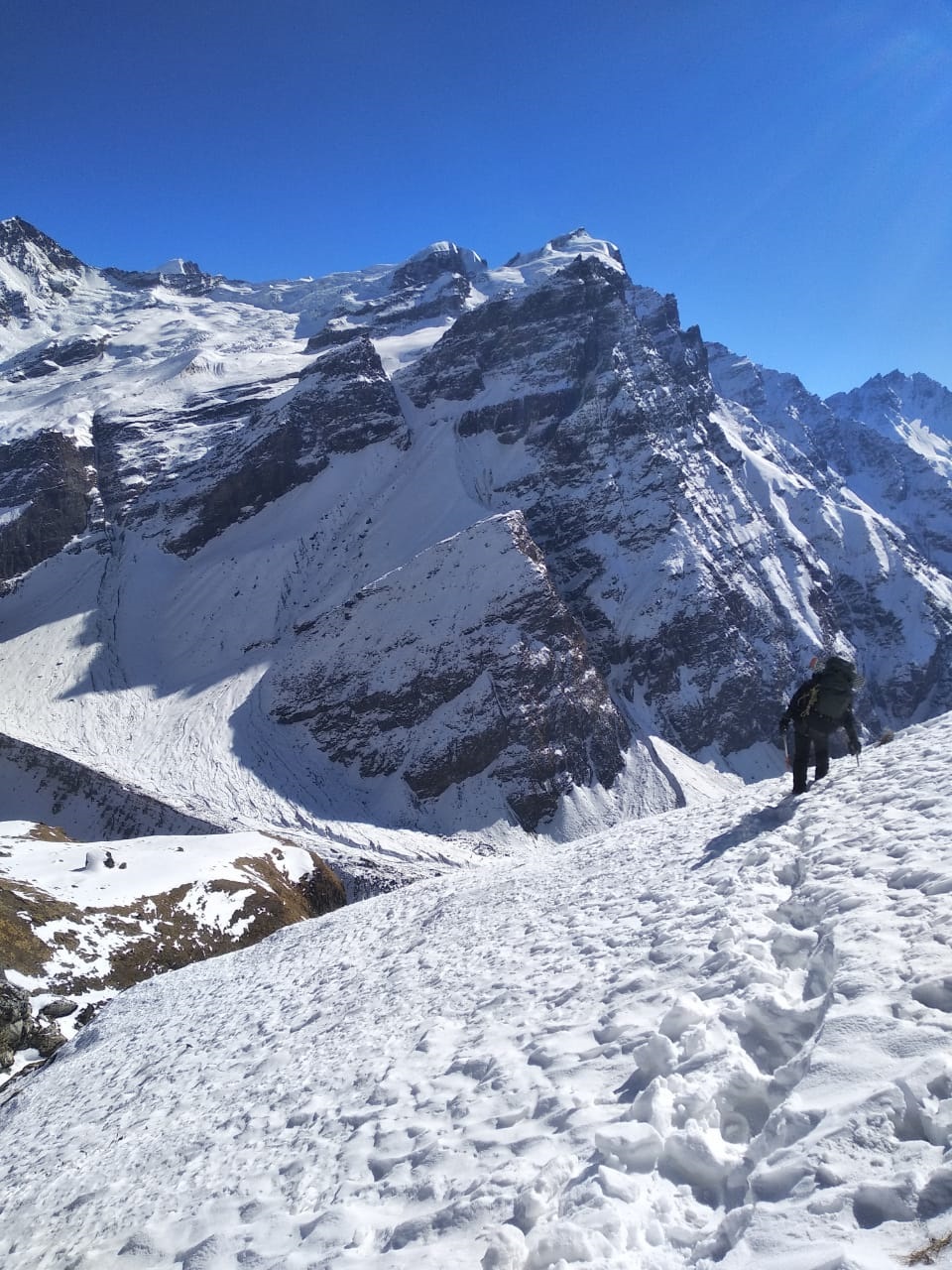
Approach to upper camp
It is this time-honoured, self-evident principle that Brig. Ashok Abbey, President of Indian Mountaineering Foundation and Mr. Goutam Datta, veteran mountaineer, stressed upon when asked to comment upon the expeditions from West Bengal, India during autumn and winter of 2020.
Gautam Dutta was enthusiastically eloquent about the Baljuri winter expedition. “I salute this marvellous truly-winter expedition”, he said. He further clarified that “though such small self-supported expeditions were not uncommon during our times and that there also had been a winter expedition to West Sikkim in 1990, such efforts had been overshadowed by the syndicated agency supported climbs like Ama Dablam, which having no relation to either the spirit of adventure or Alpinism, but having got undeserved publicity, propagated a fake narrative for future generations and should only be written about to emphasise and expose the sham that is being published in the name of mountaineering”.
He further clarified that these efforts of Anindya was “the right expression of the true spirit of adventure, adhering to the ethos and philosophy of mountaineering”. He added that, “the young climbers on these expeditions would have been enthused and inspired in the true philosophy of adventure to now follow the right track”. On being asked whether such climbs should be given more publicity he categorically stated that, “just as certain sections of the press had promoted the fake narrative, it is within their power and good offices to now publicise the true narrative ”.
Brig. Abbey was equally enthusiastic in his responses. He said, “it’s wonderful and very heartening to see budding young climbers in a small team attempting unsupported winter climb. This is what mountaineering is all about, and IMF will readily support all such attempts and this is a step in the right direction”. He justly warned that, “it should not be a myopic view of the summit only, but that the journey should take precedence”. He also expressed his pleasure on the fact that all climbers returned safely without any cold injuries.
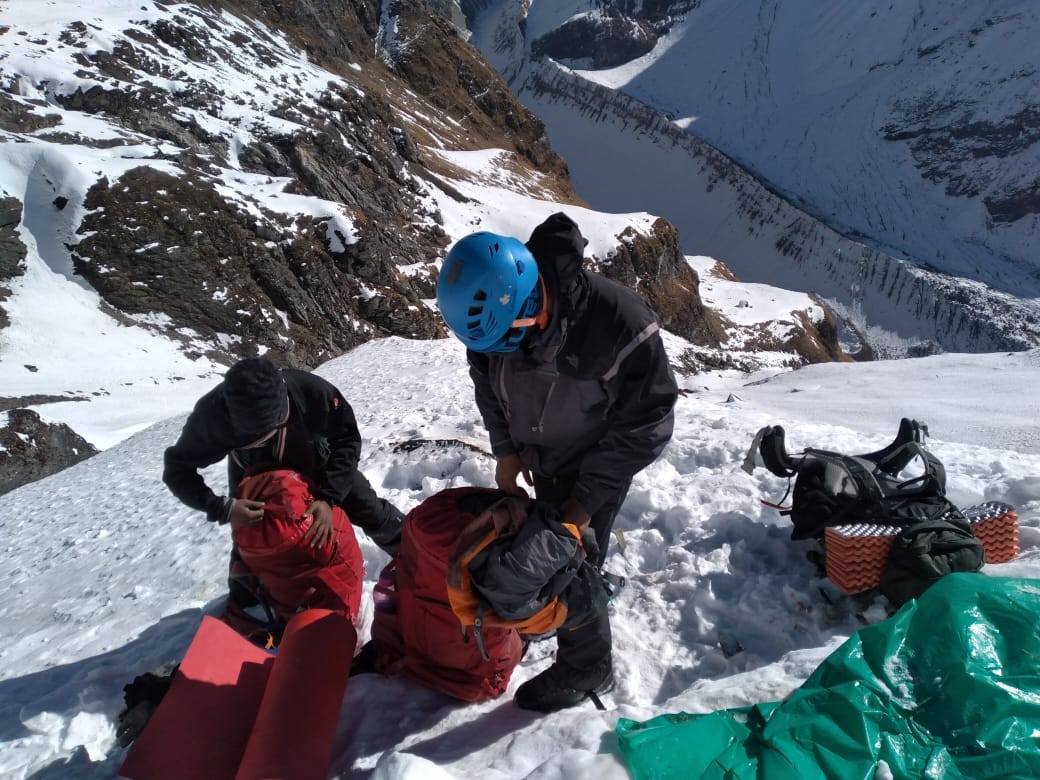
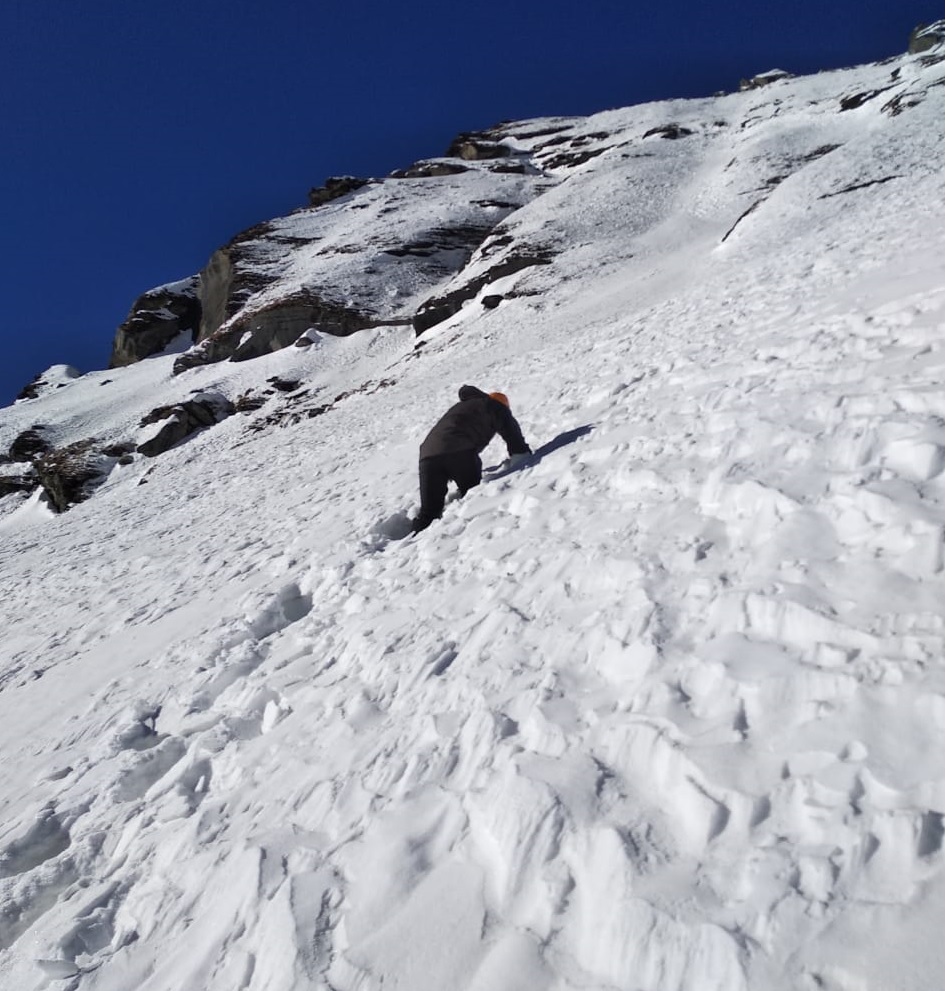
A brief Expedition report
During the 2nd and 3rd week of December 2020, a team of 4 climbers (Aniket Mitra, Rivusoumya Das, Ashish Chanda and Anindya Mukherjee) made a bold attempt to climb Mt Baljuri 5922m in Him- alpine style. From the valley floor of Phurkiya, they adopted a carry, camp and climb style without using any fixed ropes or hiring any high altitude porters or local guides. Every protocol related to Covid-19 was maintained while the team travelled through cities, towns and villages enroute.
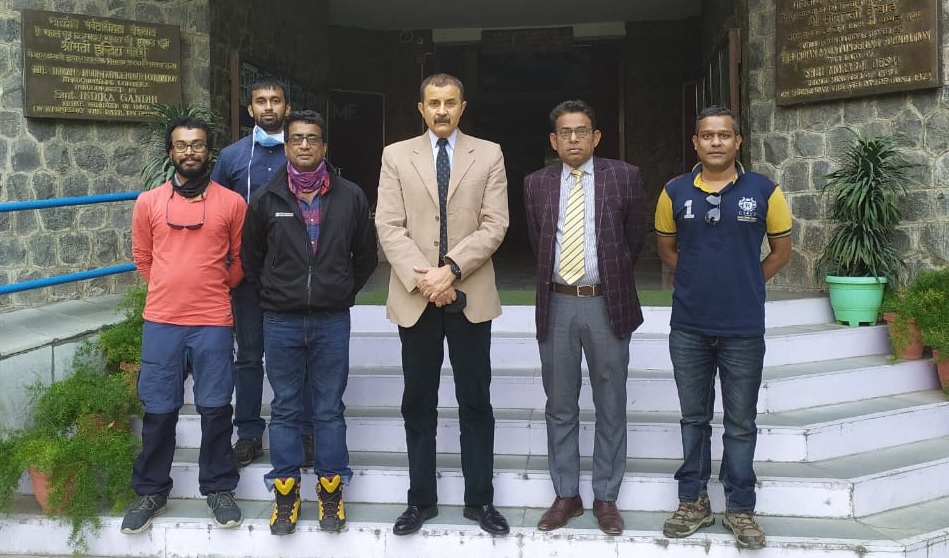
Team at IMF with hon president Brig Abbey in the centre
On 11th December the team had reached the village of Khati via Kapkote and managed to hire two ponies up to Dwali and engaged one porter (Jai Singh Danu) who agreed to go as far as the traditional Basecamp of Baljuri. As none of the 4 climbers had ever been to the Pindar valley before, and as all the trails on the true right of the upper Pindar valley were hidden under snow, the solitary purpose of hiring just one porter was to locate the right starting point for the climb from the valley floor and to obtain a general direction of the route to the Buria glacier.
However, as the winter snowline had reached well below Dwali, it became their Basecamp. They reached Dwali on 12th December and as all huts were closed for the season, they camped inside the rest shed above the PWD rest house. On 13th, they ferried their loads to Phurkiya and on 14th the whole team shifted there. The next day they made one more ferry to the traditional Basecamp site of Baljuri and shifted there on the 16th of December. Beyond Dwali and half way up to the zero point the team found the trekking trail under 6 inch to 1 feet of snow, but in tradable conditions.
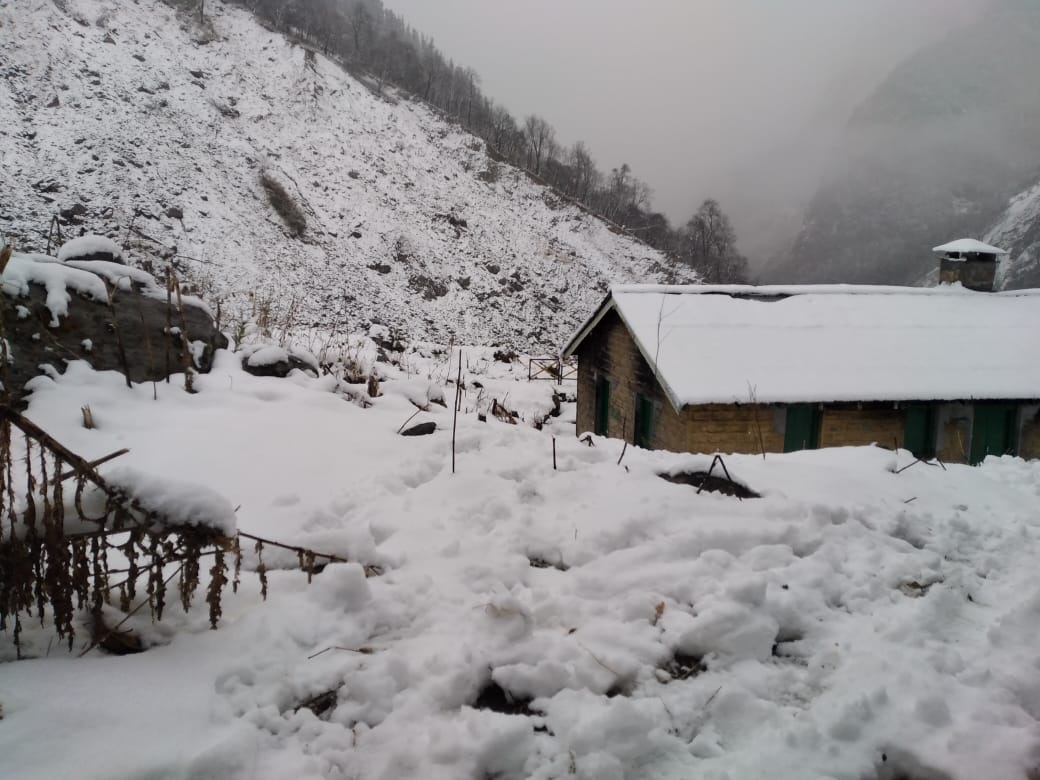
Dwali
On 17th 3 climbers ( Aniket, Rivusoumya and Anindya) started climbing the spur that leads one to the traditional camp-1 site of Baljuri. Ashish was forced to stay back as he had developed an acute tendon injury in his right leg on the previous day. By now the spur was a mixture of frozen grass, mud and boulders under a thick and deceptive (and sometimes treacherous) blanket of soft new snow. The trio reached the traditional camp 1 area after 6 hours of climb and spent the night there. The camp-1 site (4160m) itself was comparatively free of snow as it faces east and gets a lot of early morning sun.
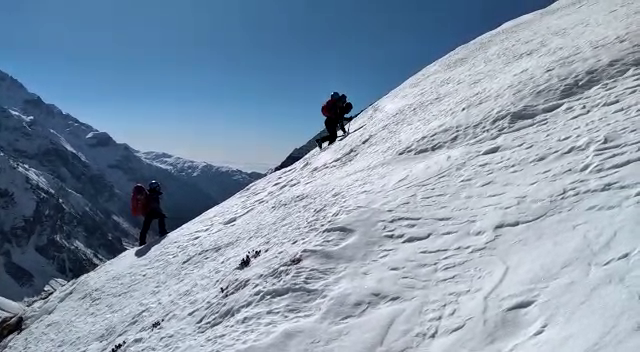
Approaching Camp-1
On 18th December, the three started pushing higher. Very soon they found themselves in knee-deep to waist deep snow on a gradient that ranged between 35 to 45 degrees. The going became increasingly slow as a result and finally after 5 hours of trail breaking, step making, plodding, pushing and almost frustrating route finding through unconsolidated powder filled gully systems the three could climb only 500 meters. In the hope that early morning hours would offer better snow conditions the trio decided to call it a day and cut (rather dug) a ledge on the north eastern face of point 4800m located approximately 800mts south east of the Baljuri col and made a Bivi there. The altitude of this Bivi was approximately 4600mts.
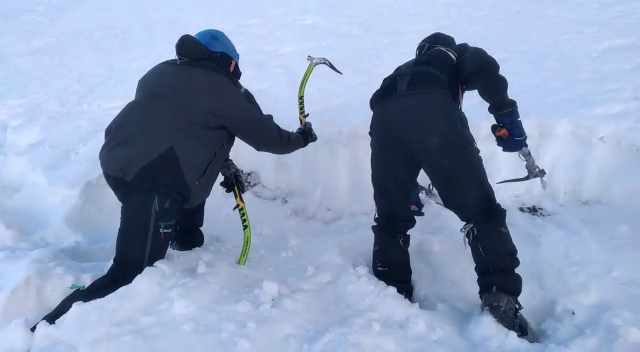
Preparation of Bivi
On 19th December, as the three started climbing further up, to their surprise they found no change or improvement in snow conditions as hoped due to overnight freezing. As the team was getting very close (100m) to reaching a comparatively easier angled Neve of the Buria glacier, the team had encountered slab formations big enough to swipe them clear off the face. It is then the team decided to turn back immediately. The team cleaned the Bivi site and started a long and slow descend to the valley floor. They reached the traditional Basecamp by 5pm and were greeted by Ashish and Jai.
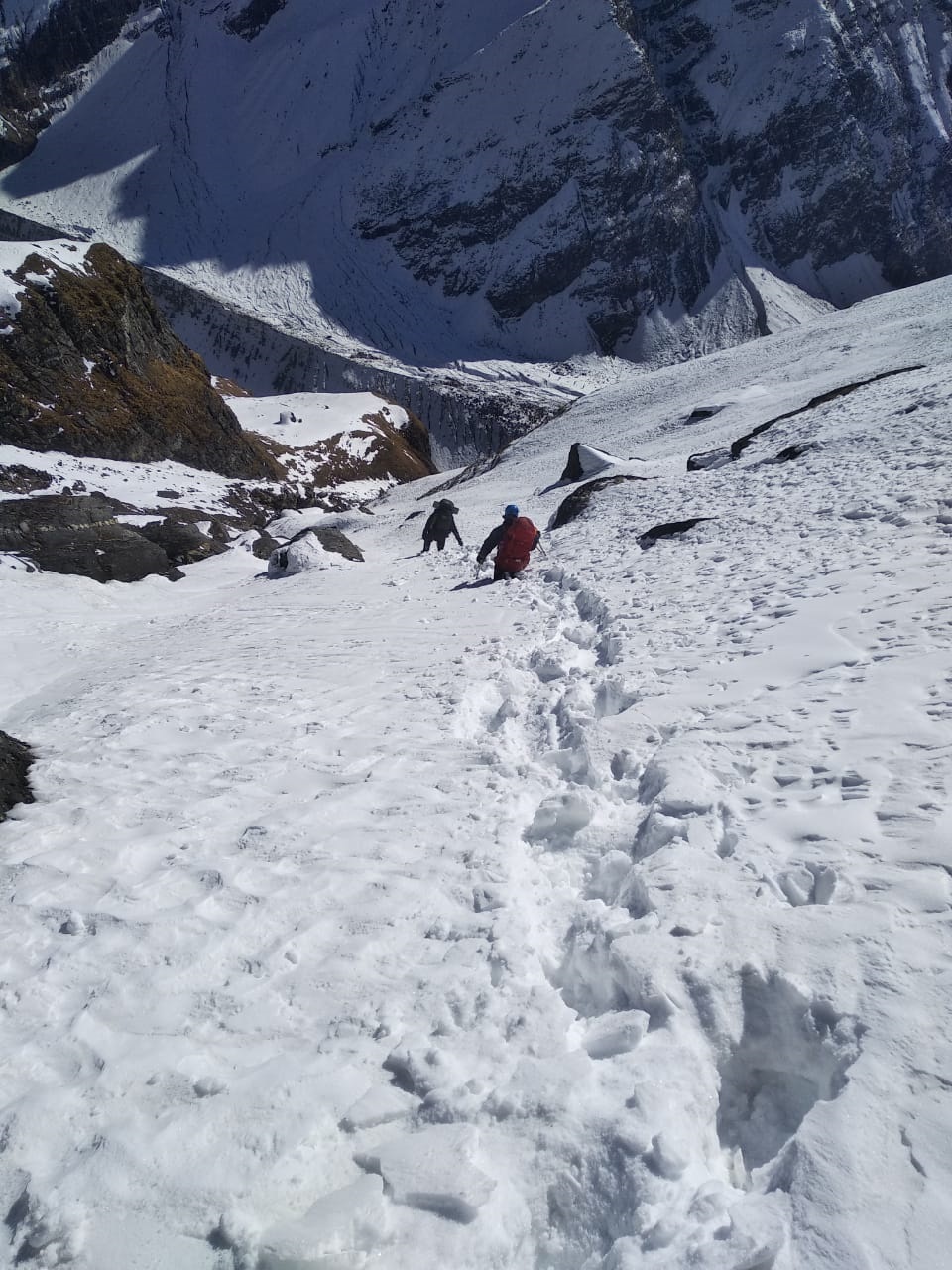
Descending from Bivi
On 20th December, the whole team trekked down to Dwali and on the 21st to Sarni, a hamlet at the road head of Kharakiya. The team had left Kolkata on 7th December and is scheduled to return on 24th December.
The expedition members are grateful to The Indian Mountaineering Foundation, Brig. Ashok Abbey (Hon.President- IMF), Dr. Kallol Das (Hon. Vice President- The Himalayan Club), Dr. Rupak Bhattacharya, Sri Gautam Dutta, Sri Bhushan Poshe, Allied Safety Sports, Sri Rohit Bhat, Sri Sujoy Dey, Sri Bapi Ray, Sri Karn Kowshik, Sri Vinod Singh, Sri Panigrahi and Trek Kit India for their kind patronage, guidance, camaraderie and support.
Reported by: Anindya Mukherjee, Climbing Leader of the Expedition Team






